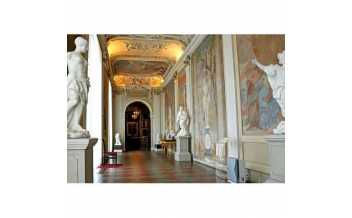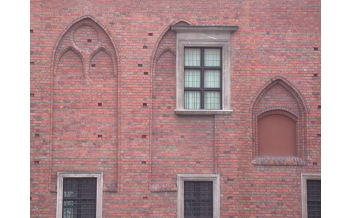« I am thankful for heavens that in all my instincts I stood Polish » - Friedrich Nietzsche
Welcome to Warsaw, the thriving heart of Poland where history and modernity seamlessly intertwine. This vibrant metropolis boasts a rich tapestry of captivating landmarks, cultural treasures, and a dynamic atmosphere that leaves visitors spellbound. From the meticulously restored Old Town to the buzzing urban energy of its neighborhoods, Warsaw offers an immersive experience that blends tradition and innovation. Join us on an unforgettable journey as we explore the must-see attractions, indulge in culinary delights, and immerse ourselves in the fascinating heritage of this remarkable city. Whether you're a history enthusiast, a food lover, or an art aficionado, Warsaw promises to deliver an extraordinary adventure that will leave an indelible mark on your travel memories.
Activities
-
-
Królikarnia - The Rabbit House, Warsaw
Since 1965 the palace has housed a museum dedicated to Polish sculptor Xawery...
-
Maria Skłodowska-Curie Museum, Warsaw
The museum, which is sponsored by the Polish Chemical Society, is the only...
-
Museum of King John III's Palace at...
One of Poland’s oldest museums displaying a variety of objects from around...
-
Museum of Modern Art, Warsaw
It was established in 2005. Until the construction of its new museum, the...
-
Museum of Pawiak Prison, Warsaw
It shows the history of Pawiak Prison which was notably used during the...
-
National Museum in Warsaw
Come and visit the National Museum in Warsaw, where you can appreciate a rich...
-
Nicolas Copernicus Monument, Warsaw
It stands before the Staszic Palace, the seat of the Polish Academy of...
-
Nożyk Synagogue, Warsaw
It was built in 1898-1902 and was restored after World War II. It is still...
-
Palace of Culture and Science, Warsaw
With a total height of 237 metres it is the tallest building in Poland, the...
-
Palace on the Isle, Warsaw
A former royal residence on an artificial island in a lake in Lazienki Park.
-
-
Ujazdów Park, Warsaw
It borders Aleje Ujazdowskie, with its many embassies and Sejm building. From...
-
Warsaw New Town, Warsaw
It lies just north of the Old Town and is connected to it by ulica Freta,...
-
Zacheta National Gallery of Art, Warsaw
If you are in Warsaw, or if you are a fan of modern art, it worth a visit in...
-





















